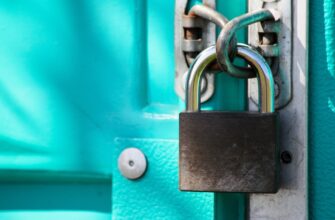Why Your Private Key is Your Crypto Lifeline
Your private key is the ultimate gatekeeper to your cryptocurrency holdings—a unique string of characters that proves ownership and enables transactions. Lose it, and your digital assets vanish forever. Expose it, and thieves can drain your wallet in seconds. With crypto thefts exceeding $4 billion in 2023 alone, guarding this digital skeleton key isn’t optional. The good news? Maximum security doesn’t require expensive hardware. This guide reveals proven low-cost methods to protect your private key without compromising safety.
7 Budget-Friendly Private Key Protection Strategies
Implement these affordable solutions to create layered security:
- Paper Wallets (Cost: $0-$5) – Generate keys offline using open-source tools like BitAddress, print on paper, then laminate or use fire-resistant bags. Store in multiple secure locations.
- Encrypted USB Drives ($5-$15) – Use VeraCrypt to create encrypted containers on budget USB drives. Store keys as text files inside these password-protected vaults.
- Password Managers (Free-$30/year) – Bitwarden (free tier) or KeePassXC store encrypted keys behind master passwords. Enable 2FA for added security.
- Metal Backup Plates ($10-$25) – Stamp or engrave keys onto stainless steel plates from companies like CryptoTag. Survives fires/floods paper can’t.
- Multi-Signature Wallets (Gas fees only) – Use free tools like Gnosis Safe to require 2/3 approvals for transactions. Distribute keys geographically.
- Offline Digital Storage (Free) – Create encrypted key files on old smartphones or laptops disconnected from the internet permanently.
- Shamir’s Secret Sharing (Free) – Split keys into fragments using open-source tools. Store parts with trusted parties—no single point of failure.
Step-by-Step: Creating a Bulletproof Paper Wallet
Follow this secure process for under $5:
- Disconnect your computer from the internet
- Download BitAddress.org source code from GitHub
- Run the HTML file offline to generate keys
- Print directly to paper (no cloud printing)
- Laminate or seal in waterproof bags
- Store copies in a home safe and bank deposit box
- Destroy all digital traces after transfer
Pro Tip: Never photograph or scan paper wallets—digital copies create attack vectors.
Password Manager Implementation Guide
When using password managers:
- Choose open-source options like KeePassXC for transparency
- Create a 15+ character master password with symbols, numbers, uppercase/lowercase
- Enable two-factor authentication (2FA)
- Store database files on encrypted USB drives, not cloud storage
- Never store exchange keys—only non-custodial wallet keys
Critical Mistakes That Compromise Low-Cost Security
Avoid these budget-killing errors:
- Storing digital copies on internet-connected devices
- Using cloud services without client-side encryption
- Sharing keys via email/messaging apps
- Single-location paper storage (vulnerable to disasters)
- Ignoring regular integrity checks of backups
FAQ: Low-Cost Private Key Security
Q: What’s the absolute cheapest secure method?
A: Paper wallets with fire/water protection. Total cost: under $5 for laminating sheets and storage bags.
Q: Can I use free cloud storage securely?
A: Only if you encrypt keys locally first with tools like GPG before uploading. Never store raw keys in the cloud.
Q: How often should I check my backups?
A: Verify paper/metal backups every 6 months for degradation. Test encrypted backups quarterly.
Q: Are hardware wallets worth the extra cost?
A: For large holdings ($10k+), yes—but sub-$50 solutions like encrypted USBs with multi-sig provide robust protection for smaller portfolios.
Q: What if I lose all my key backups?
A: Recovery is impossible. This is why the 3-2-1 rule is critical: 3 copies, 2 formats (paper + digital), 1 off-site location.
Final Security Checklist
Before implementation:
- ✓ Test recovery process with trivial amounts
- ✓ Store backups in geographically separate locations
- ✓ Use ink that won’t fade for paper backups
- ✓ Never reveal keys to “support staff”—it’s always a scam
By combining these low-cost techniques, you create security layers that rival premium solutions. Remember: In crypto, your vigilance is the ultimate firewall.








